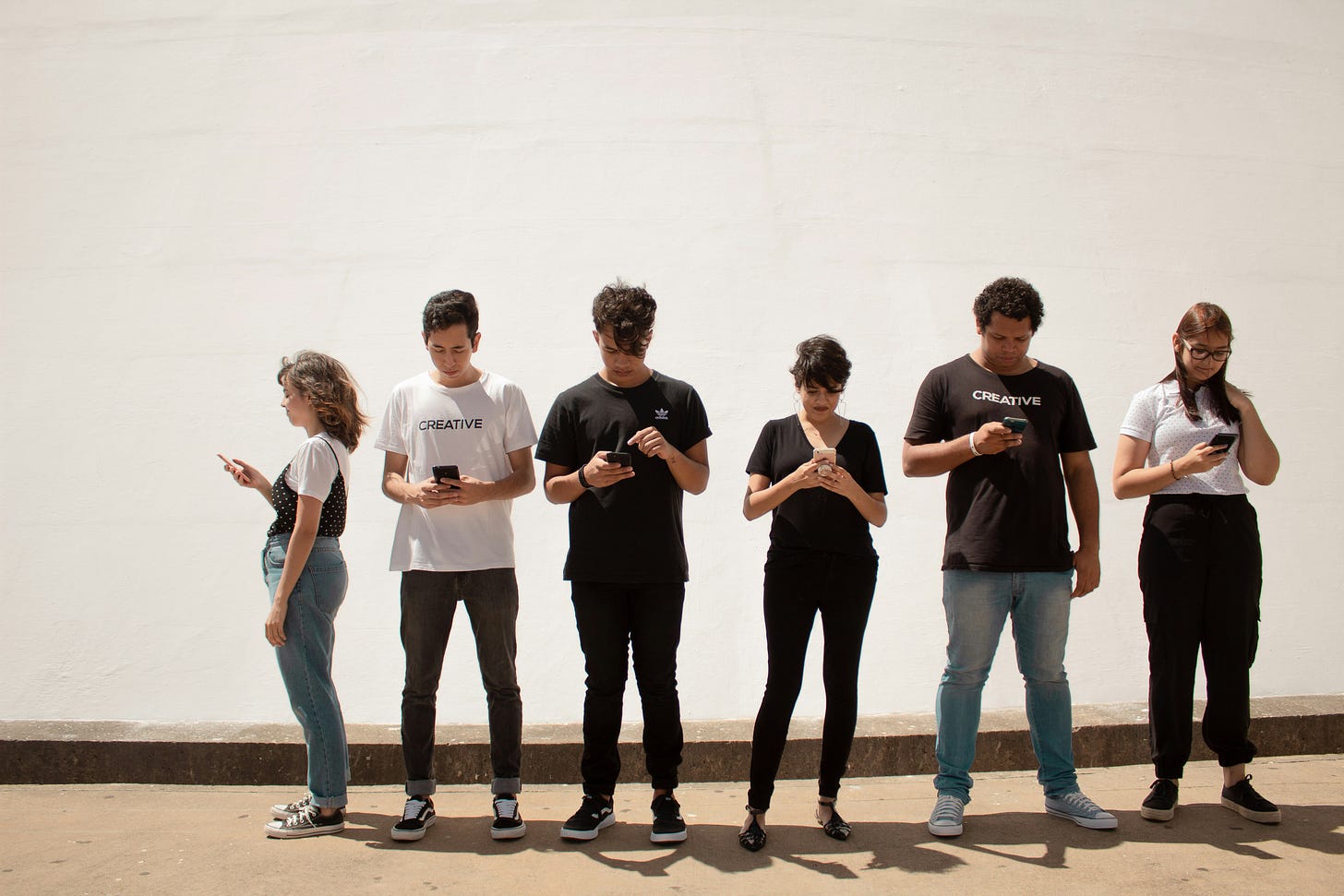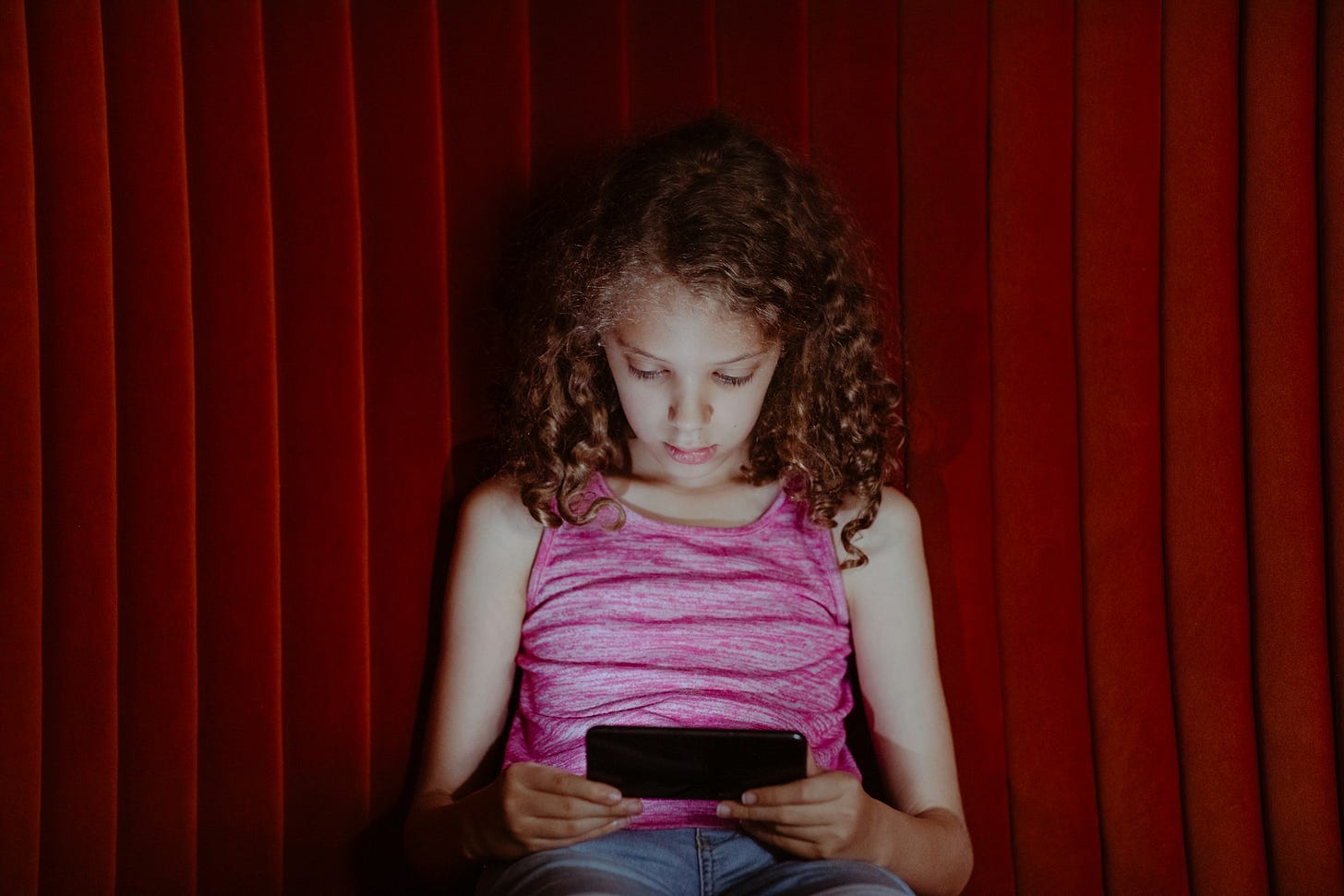Busting the Social Media Minimum Age Myths
Which myths are still circulating and why they don’t hold up under scrutiny
In response to growing momentum in Australia to oppose social media minimum age restrictions, researchers from some respected organisations have released resources for parents. Researchers from Orygen and the Centre of Excellence for the Digital Child are the most recent. These resources appear to question the Australian government’s introduction of a minimum age of 16 for accounts on social media platforms, due to take effect by December 2025.
Eight common myths have begun circulating in this debate. Here I show you why they don’t hold up under scrutiny.
Myth 1: “A social media age ban violates children's rights to access and inclusion”
The internet will not be removed from children — only social media access will be limited. Children will still have access to the internet, text messaging, educational platforms and communication tools.
This myth relies on conflating two things: access to technology, and access to platforms designed to maximise engagement through algorithmic manipulation and addictive design. Social media platforms and their algorithms aren’t neutral tools. They are engineered to capture attention, amplify insecurity and exploit emotional vulnerability. This can have particularly nefarious consequences during adolescence. What this myth overlooks is the fact that not all access is beneficial.
Children have a right to develop in a safe, addiction-free environment. This right naturally outweighs unrestricted access to platforms designed to be addictive.
Myth 2: “Addiction only happens through algorithms”
This myth reduces a psychological, and very human, problem to a technical feature. It suggests that if we just fix the recommendation systems or UX design, addiction won’t be an issue.
In reality, addictive use is driven by anticipation: the hope of a surprise, connection, praise or distraction. It’s the possibility of something rewarding that keeps people reaching for their phones, not just the content itself.
Children don’t need more digital self-management tips or nudges. They need to develop the ability to be bored, to delay gratification, and to connect offline. That’s not something you get from user interface tweaks — it comes from time, space, effort and deliberate boundaries.
To learn more about The Dip and dopamine levels, read this article.
Myth 3: “We must choose between education and regulation”
Critics often present regulation as unnecessary or premature, arguing that the solution is simply better education for parents and children. But this is a false dilemma.
We don’t take that approach in other areas of public health. We don’t expect families to independently manage tobacco, alcohol, gambling, driving or pharmaceuticals without regulation. We pair education with restrictions because that combination protects people most effectively.
Social media platforms are no different. Education is essential, but it needs to be paired with reasonable boundaries and clear accountability for tech companies.
Myth 4: “Banning platforms increases the digital divide”
The idea that limiting under-16s’ access to social media is a form of digital exclusion misunderstands what the digital divide actually means. Access to social media for children doesn’t advantage them economically or socially. When schools introduced mobile phone bans, outcomes improved — especially for girls from lower socioeconomic backgrounds. Research results have shown less bullying, better classroom engagement and improved academic performance, and fewer mental health issues following smartphone bans. And in multiple studies, the most disadvantaged children benefited most from phone bans.
There is a difference between helping Australians access digital services and handing highly immersive, addictive platforms to 13-year-olds. Framing increased digital access as inherently beneficial ignores the downside of overexposure and the developmental need for balance.
Myth 5: “Kids will just go to more dangerous online spaces”
This argument suggests that removing teens from mainstream platforms will backfire by pushing them toward less-regulated, riskier areas of the internet.
This assumes that no other interventions, such as education, outreach and safer alternatives, will be developed in parallel. It also downplays the real and immediate harms of staying on platforms where algorithmic amplification and influencer culture dominate teen social life. It assumes that children aren’t already exposed to some of the darkest, most harmful content online - and it’s hard to imagine anything worse than videos of kittens in blenders or brutal beheadings. Right now, 3.5% of children are subjected to sexual extortion and over 300 million children are affected by online sexual abuse.
Professor Michael Salter says, “Age verification doesn't have to be bulletproof to be worthwhile. It's risk reduction.”
Regulation isn’t about punishing kids. It’s about demanding responsibility from platforms and providing guidance to families. No-one is suggesting parents should not play a part in educating and supporting their children. This regulation is about changing the norms and asking platforms to step up.
Myth 6: “Social media is connection”
Social media often equates to broadcasting, which is not a solid basis for connection. Being involved in groups (on social media as in real life) involves approval and a subtle (or sometimes overt) amount of competition; exclusion from a group hurts. For boys and girls, a 2025 study finds even ‘seemingly minor’ repeated exclusion online is associated with trauma symptoms. Social mistakes made by young people as they broadcast — and while they are developing their friendships and social skills — are public and spread widely. This can attract ridicule, cause individuals to feel persecuted, and alter the fabric of real-life school communities.
Connection via an online group is not a healthy form of connection, so this myth’s argument does not stand. A study from Italy shows 10- to 15- year-olds have less emotional intelligence with more social media use. This would indicate that exposure to social media does not foster thoughtful friendship skills or resilience, and young people can instead be drawn into a downward spiral of self-preoccupation, needing feedback via an online audience to feel good about themselves.
In the absence of social media, children can still connect via phone-calls, video-calls, emails, messages and time spent together in real life.
Myth 7: “Social media helps children with social anxiety”
Those who feel particularly shy or socially anxious do not develop the social skills they need when they build extensive networks online before having the ability to do this in the real world. The more young people meet their need to belong via social media groups, the more addicted they become to the platforms they use. They also become more dependent on social media responses to feel good about themselves. It is repeated practice of live social skills that strengthens the underlying connections in the brain and improves our abilities to relate to others. Children reliant on social media for connection who lack these skills will defer to the online alternative, which can lead to addictive use, difficulty with emotional regulation, poor self-esteem and an insecure sense of what is important in life.
Myth 8: "Supporters of the social minimum age legislation suggest that it is the only solution necessary"
I support this legislation as a clinical psychologist and researcher who examines what school programs can do to help young people under 16 with social media use. I support it based on research showing harms and a lack of research demonstrating significant benefits of social media for mental health in under 16s. The Einstein Report will set out that research in bite-size chunks.
The evidence I gave at the Australian Senate Inquiry called for a multi-layered approach. This includes minimum age legislation, built in safety-by-design principles, education for front-line clinicians, self-regulation, accreditation for health influencers and a public health campaign.
Regulation and beyond
Social media companies have had years to improve safety but have repeatedly failed to act. Instagram’s own internal research confirmed harm to teenage girls, yet little changed. Whistleblowers have made clear that the current system is working as intended — prioritising engagement and profit over wellbeing.
I do not make the case that the internet is inherently detrimental, or that teens shouldn’t have any access to any internet technology. I make the case that online spaces should be developmentally appropriate and that the burden of safety shouldn’t fall entirely on parents or children. Legislation is a reasonable approach to take against products that are fundamentally commercial determinants of health.
Offline relationships, hobbies and emotional regulation must be prioritised before we ask teens to navigate platforms built to exploit their insecurities. Waiting until 16 to join social media is not a radical proposition. It’s a reasonable public health measure grounded in what we now know about digital addiction, adolescent development, and the structure of the attention economy.
We need regulation, yes. But we also need stronger public understanding, and an honest conversation about how early digital immersion is shaping the next generation.
I want to acknowledge Sam Cornell, PhD Candidate in Public Health & Community Medicine, School of Population Health, UNSW Sydney, for his support in writing this post.









